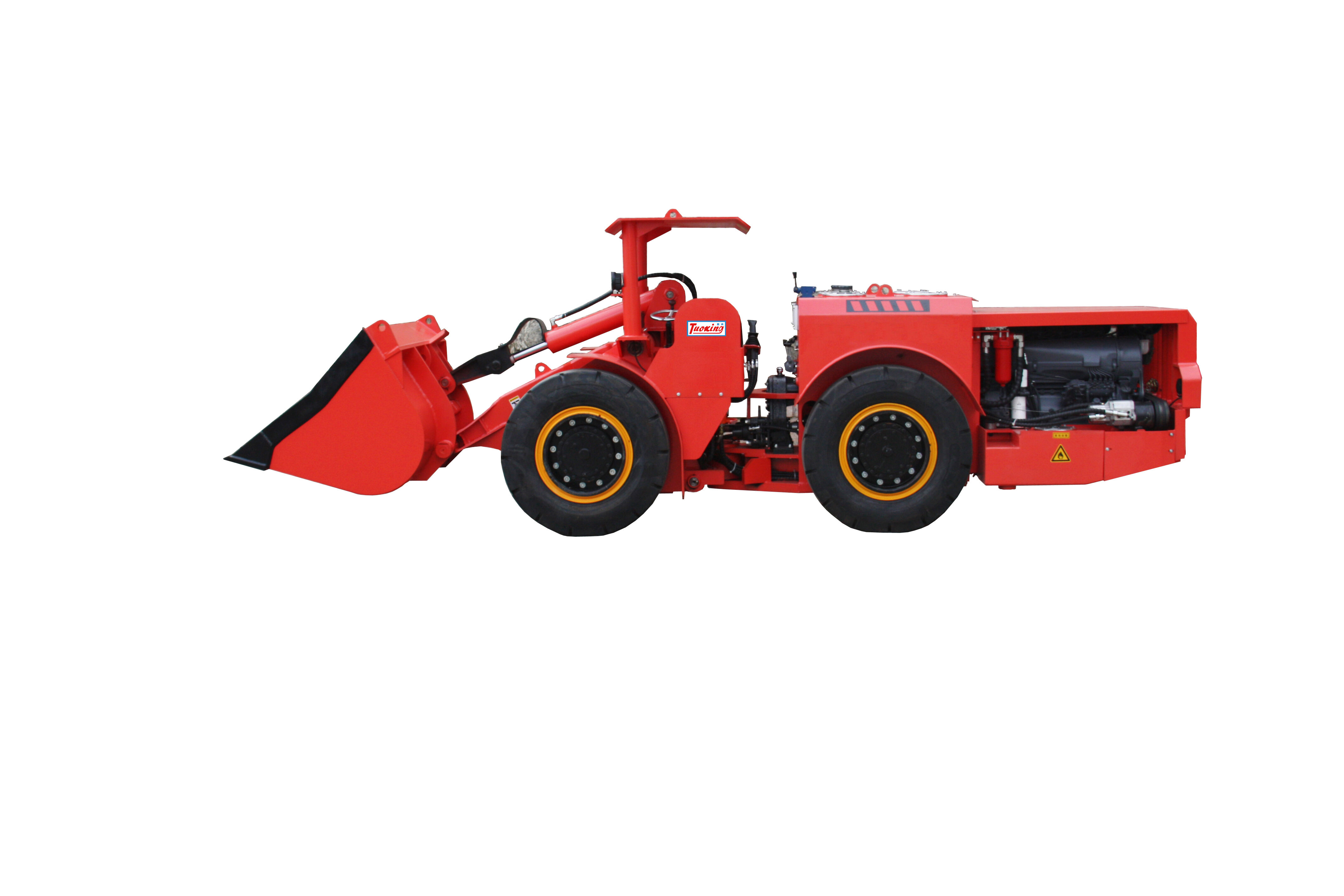最先端の地下搬出ソリューションによる鉱業作業の革新
鉱業業界は技術の進歩とともに進化を続けており、その中心にあるのが 地下ローダー です。これらの強力な機械は、鉱山作業における鉱石の採掘および輸送方法を変革し、現代の鉱業インフラにおいて不可欠な存在となっています。地下用ローダーがもたらす包括的な利点を理解することで、鉱業作業は効率性、安全性、生産性を最適化するとともに、鉱石取り扱いプロセスにおける費用対効果を維持することができるようになります。
最新の地下用ローダーの主要機能
高度なデザインとエンジニアリング
現代の地下積載機には 複雑な工学原理が組み込まれ,狭い空間でも効率的に動作できます. 機体はコンパクトで 頑丈な設計で 狭いトンネルを 通過しながら 素晴らしい荷重を 維持できます 輪式 ステアリング システム は 卓越 な 操縦 能力 を 提供 し,操作 者 たち に 精度 と 制御 を 備える 鉱山 の 難しい 地域 に アクセス する こと を 可能に し て い ます.
地下積載機の構造的整合性は,厳しい地下環境に耐えられる高強度素材で強化されています. 重要な部品は 石の落下や瓦から守られ 特殊な密封器は 塵や湿気が 生命システムに 害を与えないように 防ぎます この耐久性は 保守の必要性を軽減し 寿命が延長されるのです
最先端技術の統合
現代の地下積載機には 運用能力を向上させる 先進的な技術システムがあります 自動監視システムは 機械のパフォーマンスを継続的に追跡し エンジン状態,液圧,負荷分布に関するリアルタイムデータを 提供します この情報により 予期せぬ 整備のスケジュールが作られ 予期せぬ故障を防ぐことができます
現在,地下積載機の多くは,遠隔監視と車両管理を可能にするテレマティックシステムを搭載しています. これらのシステムは,機械利用量,サイクル時間,生産性指標に関する貴重な洞察を提供し,運用管理者がワークフローとリソースの配置を最適化できるようにします.
地下採掘 の 運用 利点
生産性 と 効率 を 向上 さ せる
地下ローダーは、大量の鉱石を迅速かつ効率的に処理できる能力により、採鉱生産性を大幅に向上させます。高容量のバケットと強力な駆動システムにより、素早い積み込みと搬送サイクルが可能となり、作業面からトランスファーポイントまで材料を移動するのに必要な時間が短縮されます。この効率の向上は、直接的に高い生産速度および1トンあたりのコスト指標の改善につながります。
地下ローダーの汎用性により、生産での積み込みから開発作業、清掃作業に至るまで、複数のタスクを実行できます。この柔軟性により、専用機器の必要性が減少し、機材フリートの管理が簡素化され、資源のより良い活用と運用効率の向上が実現します。
安全性の向上とリスク低減
地下採掘作業では 安全性が最重要であり,現代の地下積載機には,操作者と整備員を保護するための多くの機能が組み込まれています. ROPS/FOPS認証の付属型キャビンは,落下する物体から保護され,戦略的に配置されたカメラや鏡を通して優れた視力を維持します. 強化された照明システムは,弱光条件で最適な視力を確保します.
接近感検知と衝突回避技術を含む 先進的な操作者支援システムは,事故を予防し,設備と人材の両方を保護します. 危険 地域 から 遠く の 安全 な 場所 から 操作 者 が 制御 できる 遠隔 操作 機能 も 提供 さ れ て い ます.

鉱山事業に対する経済的影響
コスト最適化と投資利益率
地下用ローダーへの初期投資はかなり大きくなる可能性がありますが、長期的な経済的メリットによりこの支出は正当化されます。高い生産性と効率的な運転により、搬送する物資1トンあたりのコストが低減します。さらに、現代のローダーは耐久性と信頼性が高いため、メンテナンス費用が削減され、保守間隔が延長されます。
地下用ローダーの汎用性も、複数の専用機械を必要としないことでコスト削減に寄与します。これにより機器が統合され、設備投資額が抑えられ、メンテナンス体制も簡素化されます。さらに、高度な監視システムによって高価な故障を未然に防止し、メンテナンスのスケジューリングを最適化できます。
環境と持続可能性の考慮
現代の地下用ローダーは、環境持続可能性を念頭に置いて設計されています。Tier 4適合エンジンや高度な排出ガス制御システムにより、作業による環境への影響が最小限に抑えられています。また、電動式およびバッテリー駆動モデルの選択肢がますます広がっており、環境配慮型の作業現場向けにゼロエミッションの代替手段を提供しています。
地下用ローダーの効率的な運転は、搬送する物資1トンあたりのエネルギー消費量の削減にも貢献します。このエネルギー効率の向上は、運用コストの低減だけでなく、鉱山企業が持続可能性目標を達成し、環境規制に準拠するのにも役立ちます。
将来の発展と傾向
自動化および遠隔操作
地下用ローダーの将来は、自動化の進展と遠隔操作機能の強化にあります。半自律および完全自律型システムが開発・導入されつつあり、ローダーが事前に設定されたルートを走行し、最小限の人間の介入で積み込み作業を行うことが可能になっています。これらの進歩により、安全性と効率性がさらに向上し、運用コストの削減も期待されています。
遠隔操作センターにより、オペレーターは地上の安全で快適な環境から複数の機械を制御できます。この技術は安全性を高めるだけでなく、オペレーターの労働環境を改善し、人的資源のより効率的な活用を可能にします。
デジタルマイニングシステムとの統合
地下用ローダーは、包括的なデジタル鉱山管理システムとますます統合されつつあります。リアルタイムでのデータ収集と分析により、機材の最適な運用管理、予知保全、生産計画の改善が可能になります。この統合により、すべての作業が高度な分析と自動化を通じて相互に接続され最適化される「デジタルマイニング」の概念を支えています。
地下用ローダーへのAIおよび機械学習技術の適用は、今後さらにその能力を高めていくことが期待されています。これらの技術により、より効率的な走行経路の計画、障害物回避の向上、そして材料の特性や作業条件に基づいた最適な積込みパターンの実現が可能になります。
よく 聞かれる 質問
地下用ローダーはどのような容量範囲で利用できますか?
地下積載機は様々なサイズで利用可能で,通常は3〜18メット্রিকトンまでの積載容量です. 選択はトンネルの寸法,生産要件,材料の特性などの要因に依存する. 製造者は,さまざまな運用ニーズと鉱山構成に合わせて複数のモデルを提供しています.
保守の頻度は 従来の荷装機器と比べてどうですか?
現代の地下用ローダーは、頑丈な設計と先進的な監視システムにより、従来の積み込み機械に比べてメンテナンス頻度が低くて済みます。定期メンテナンスの間隔は通常長く、予知保全機能により予期せぬ故障を防ぐことができ、結果として稼働率が向上し、メンテナンスコストが削減されます。
地下用ローダーのオペレーターにはどのような訓練が必要ですか?
オペレーターには、理論知識と実践経験の両方を含む包括的な訓練が必要です。訓練プログラムには通常、機械の操作、安全手順、点検作業、緊急時の対応手順が含まれます。自動化システムや遠隔操作機能など高度な機能については、追加の訓練が必要となる場合があります。
電動式の地下用ローダーとディーゼルモデルを比較するとどうなりますか?
電動地下用ローダーは、ディーゼルモデルと比較して排出ゼロ、発熱量の低減、換気要件の削減といったいくつかの利点があります。初期費用は一般的に高くなりますが、運用コストやメンテナンス頻度が低くなることが多く、経済的に有利です。バッテリー技術は進化を続けており、電動モデルは多くの作業現場でますます実用的になっています。
